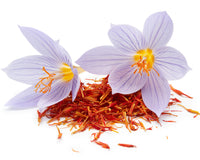One of the healthiest and most adaptable plant-based proteins is lentils. Lentils, which are related to peas and beans and are classified as pulses (dry edible seeds of legumes), are native to Asia and northern Africa.
They are extremely low in fat and rich in calcium, iron, protein, fibre, and other minerals. When cooking, lentils taste great in classic meals like curry or soup, but they also go great in veggie burgers, sauces, casseroles, and as a vegetarian main dish on their own.
For up to a year, dried lentils can be kept at room temperature in an airtight container.
Before adding lentils to recipes, it is typically advised to rinse them and immediately check for any broken pieces. Lentils do not require soaking like other dried beans or peas, although if you do, cooking time can be halved.
We'll discuss the nutritional benefits of lentils in this post and offer guidance on which colour of lentil is the healthiest for you.
The Types of Lentils
Because of their resemblance to lenses, lentils are a kind of legume (together with beans and chickpeas) that got their name from a Latin word that meant "lens."
Lentils come in a variety of colours, including black, red, yellow, green, brown, and puy. You are not alone if you are unclear about how to differentiate between the different types of lentils. Here we will give a brief overview of the different varieties of lentils:
Black Lentils
These substantial pulses, often known as beluga lentils, go great with other proteins or meaty veggies.
They were given this moniker because of how much they resembled beluga caviar, despite the fact that they tasted rich and earthy like black beans. They cook in around 25 minutes and are the most nutrient-dense kind of lentil.
The best part is that black lentils are the most nutrient-dense type of lentil, including high quantities of calcium, potassium, iron, and protein. According to the USDA, a half cup of raw black lentils has 960 mg of potassium, 100 mg of calcium, 8 mg of iron, and 26g of protein.
Additionally, they are abundant in anthocyanin, an antioxidant often found in foods that are purple or blue.
Red and Yellow Lentils
Red and yellow lentils are used often in soups and stews, especially when you want a soft texture. They are the mildest, sweetest, and most "tender" of several lentil species. These lentils are frequently used in Middle Eastern and Indian cuisine.
Because the seed coat has been removed, unlike other types, they don't keep their form (or texture) well when cooked, which is why they're frequently used in pureed soups and sauces.
Yellow lentils take roughly 15 to 20 minutes to cook, similar to red lentils. They are used to provide a splash of colour and a sweet, nutty flavour to food. According to the USDA, a half cup of raw red lentils has 600 mg of potassium, 40 mg of calcium, 22g of protein, 10g of fibre, and 6 mg of iron.
Green and Puy Lentils
Iron, magnesium, and antioxidants are all abundant in green lentils. They are excellent in salads or as a heated side dish because of their zingy peppery flavour.
Although they may take the longest to cook—about 45 minutes—they maintain their form best. The first green lentils were gathered in the French province of Le Puy, and they are known as "Puy" lentils.
They are all the same shade of grey-green and are renowned for having the greatest flavour and texture of any lentil kind. They are often the costliest kind as a result.
Brown Lentils
Similar to green lentils, brown lentils are a kind that maintains their form well. They have a little more subdued and earthy flavour and are widely used in North America. Because they taste great blended into soup, on top of salads, and even mashed into veggie burgers, think of these lentils as the all-in-one legume.
Nutrient Value of Lentils
We at Taj Spice are happy to call lentils a "powerhouse" of nourishment since they are full of several vitamins, minerals, and health advantages, such as:
Protein-dense
High fibre
Potassium
Folate
Iron
Low fat
Choosing the best lentils
The recipe will determine the lentil you use. Red/yellow lentils perform best in soups and stews because of their mushy texture, although brown lentils may be used pretty much anywhere. Unlike red lentils, which lose their shape after cooking, green and brown lentils keep their shape and are excellent in salads, casseroles, side dishes, etc.
How to prepare lentils?
Lentils don't require soaking prior to cooking, unlike the majority of dry beans. Rinse them only. But first, go through them and discard everything that appears to be damaged. The quickest to cook, red lentils typically take 5 minutes. The other kind usually requires 20 minutes.
Lentils can be served warm with rice or cold in a salad. You may purchase canned lentils at your neighbourhood grocery shop if you'd rather not cook.
How to Store Them?
For the best results, keep dried lentils in an airtight container for up to a year in a cold, dark place (such as a pantry or kitchen cupboard).
After this point, the lentils begin to lose flavour but do not technically "go bad." When kept properly, lentils can remain in pristine condition for three years.
Health Benefits of Lentils
Lentils rank second in terms of protein content when compared to other legumes (soybeans take top honours). They may provide you with the same level of protein as meat when coupled with a full grain, such as brown rice.
The building blocks of bones, muscles, and skin are proteins. It can also help you lose weight since it makes you feel full for longer than other foods.
The same is true with fibre. It is abundant in lentils. A single serving provides 32% of the daily recommended fibre intake. A regular fibre intake helps your digestive system move waste out while also preventing constipation.
Lentils' potassium, folate, and iron all have a wealth of advantages. Potassium decreases blood pressure and counteracts the negative effects of salt. The growth of your unborn child depends on getting enough folate if you're pregnant. Iron protects against weariness.
Frequently Asked Questions (FAQs)
Do you need to soak lentils?
No, it's not necessary. It is advised, nonetheless, if you frequently feel bloated (or gassy) after eating beans. Lentils can contain anti-nutrients that can irritate the digestive system.
Soaking lentils can assist to neutralize these anti-nutrients (raising the rate of mineral absorption). Additionally, soaking aids in the breakdown of the amylase present, making the food simpler to digest.
Can you eat raw lentils?
No, don't do that. Uncooked lentils may be harmful to humans and seriously irritate the stomach, much like other legumes can.
Which coloured lentils are the best?
The split red and yellow lentils, especially those that have been hulled, have a tendency to dissolve and are thus best used in soups or other applications where they will be pureed. In contrast, the brown and green kinds often hold their form well (some more completely than others).
Why are red lentils bad for you?
Trypsin inhibitors and phytic acid, two antinutrients found in lentils, limit several nutrients' absorption. Although soaking and boiling lentils reduces them, you will still absorb the bulk of your nutrients.
Are red lentils the healthiest?
Iron and magnesium are both abundant in red lentils. For individuals managing their calorie intake, red lentils are ideal. Only 168 calories are in one dish of cooked dal. Vitamins are abundant in red lentils, particularly folate, a form of B vitamin.
The Bottom Line
It would be difficult to find a vegan product who does not keep a variety of dry or canned legumes, including lentils, in their cupboard. They are incredibly inexpensive, high in protein and minerals, and can be kept in your cupboard for almost a year in a single huge bag!
Fortunately, there are several options available, and they are all quite adaptable. There are several ways to include them in your diet, so you won't have to worry about throwing them away at the back of your cabinet.
Read also;



